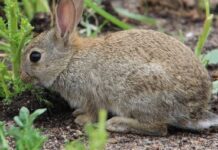I am getting questions on a caterpillar that loves walnut trees. Walnut caterpillar overwinter as pupae in ground beneath host trees. In late spring, moths emerge and deposit egg masses on lower leaf surfaces. During June and early July, emerged and gregarious larvae skeletonize leaves. Larger hairy brick-red colored larvae consume greater amounts of leaf tissues, and nearly matured gray colored larvae devour entire leaves including petioles.
When disturbed, larvae will arch their both ends of their bodies in what looks like a defensive move. Larvae will crowd together on the lower parts of trees to molt and leave an ugly patch of hairy cast skins. Mature larvae, which are 2 inches in length, descend or drop to the ground where they enter the soil to pupate. A second generation occurs soon thereafter giving rise to the overwintering pupae. Walnut caterpillar primarily feed on black walnut, pecan, and several species of hickory but may also attack birch, oak, willow, honeylocust and apple.
Literature cites the removal of leaves with egg masses as a means of controlling walnut caterpillar. This may prove impractical where large trees are involved or numbers of infested leaves are present. Bands of tree Tanglefoot could be used to ensnare larvae as they migrate to main branches or the tree trunk to molt. Chemical controls may provide the most practical means of control. Look for early signs of feeding on the ends of the branches. Larvae should be near by. The organic control spinosad is preferred and is found in Conserve; Monterey Garden Insect Spray, Natural Guard Spinosad and Captain Jack’s Dead Bug Brew. Sevin or any of the synthetic pyrethroids such as permethrin (Hi-Yield 38 Plus, Bonide Eight Vegetable, Fruit & Flower Concentrate; Hi-Yield Garden & Farm Insect Control) and cyfluthrin (BioAdvanced Vegetable & Garden Insect Spray) may also be used but will kill walnut caterpillar predators.




